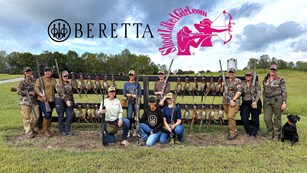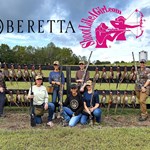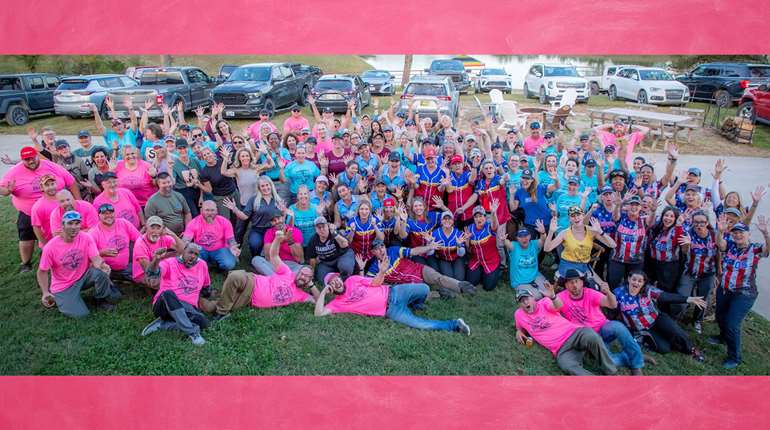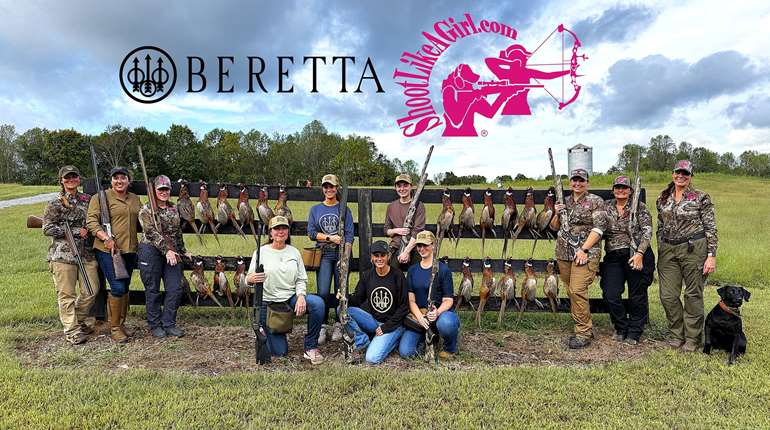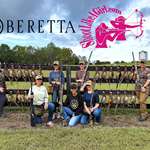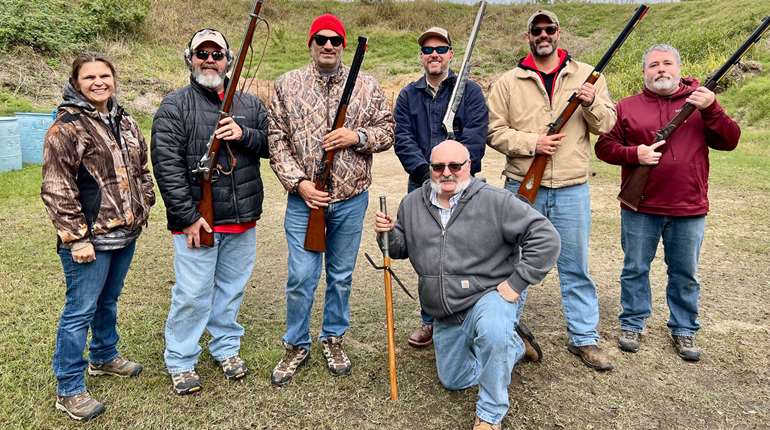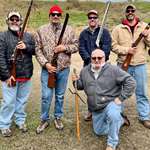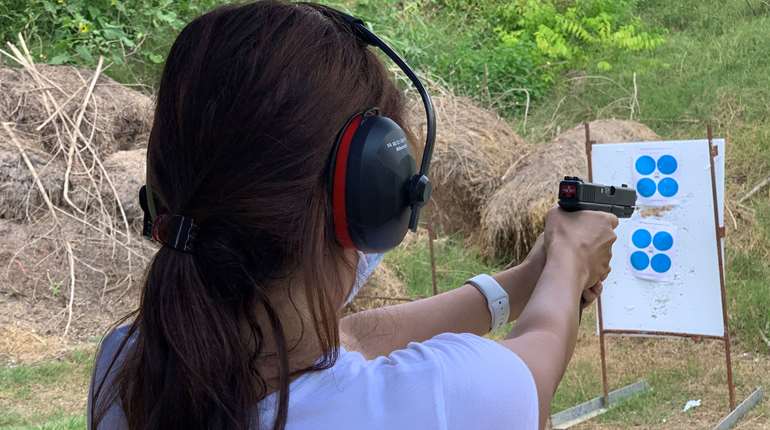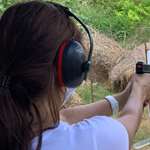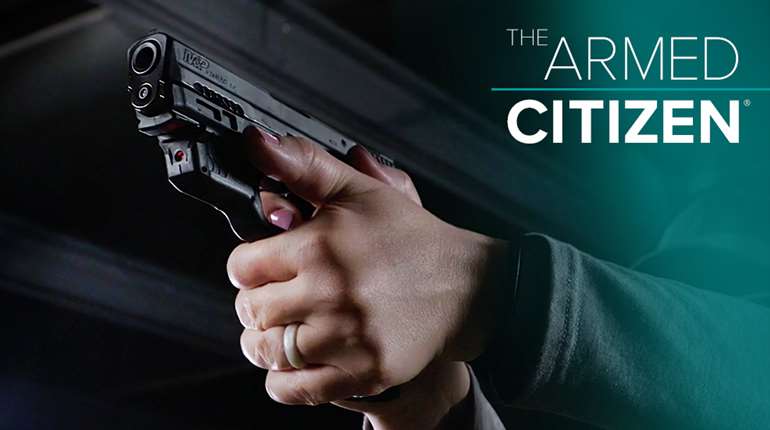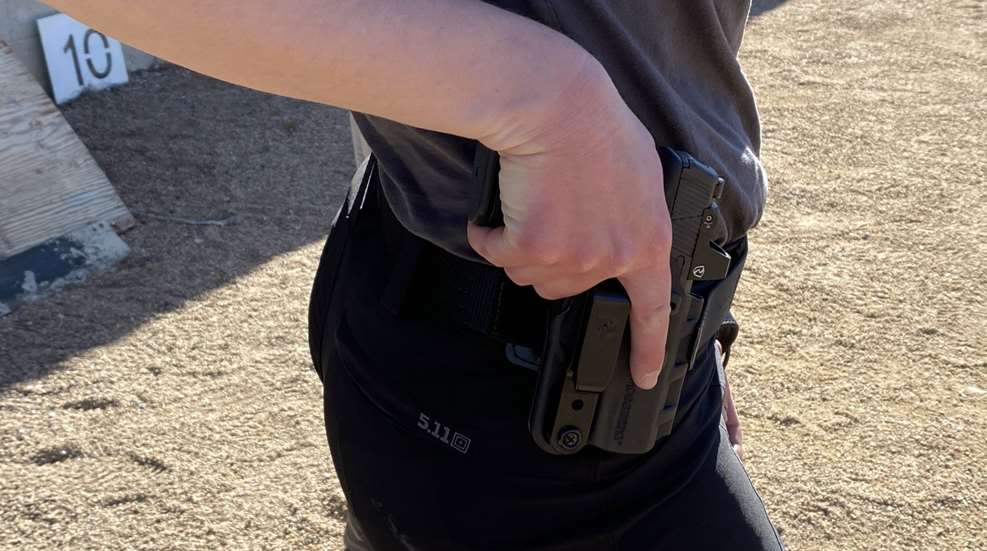
If you’re struggling to make concealed carry work for you, rest assured that you’re not alone. Many people have a hard time hiding a gun on their person, and women often have it tougher than men because we tend to wear more slim-fitting clothing. And that’s not to mention that hiding a hard, blocky object against a curvy body just isn’t easy.
Part of the reason you might be struggling could be in your mind—it’s very natural to have that “everyone’s looking at me! They can all see it!” paranoia when you first start carrying a gun. That fades over time, but you can make the process easier and more comfortable by embracing concealed carry as a whole system. It’s more than just slapping a holster on your belt and expecting it to fit into your lifestyle. There are, in fact, at least four key aspects to a good concealed-carry system. Get any one of these wrong and you’re going to make things harder on yourself.
1. The Right Gun
Some guns are easier to hide than others. This is primarily a function of size—obviously, smaller guns are easier to hide than bigger guns. Unfortunately, bigger guns are easier to shoot and generally allow you more ammo capacity, so like most things in life, this is a trade-off. The same goes for light guns vs. heavy guns: light guns are more comfortable to carry, while heavy guns are more comfortable to shoot. Again, a trade-off.
Some concealed carriers like revolvers for their relative simplicity, but I don’t care for the shape and the limited capacity, so if you are willing to practice with your concealed carry gun semi-regularly—and let’s be clear, you absolutely should be doing that no matter what gun you choose—I recommend a compact or sub-compact semi-auto. Popular calibers include 9mm Luger, .380 ACP and the new-but-catching-on .30 Super Carry. I’m a 9mm fan, personally, as I haven’t found a .380 that doesn’t feel overly snappy to me, and the advancements in firearm design allow 9mm pistols to be surprisingly small these days.
The tricky part of this is that “the right gun for you” might change when you find the right holster for you. It’s a little bit of a chicken-and-egg situation that involves some experimentation, but in general, I recommend you find a gun you like and then work on finding a holster that suits you. The gun is the foundational part of the system that everything else will work around.
Keep in mind that not all holsters are made for all makes and models of guns. Choosing a popular model firearm from a large, well-known company will increase your holster options.
2. The Right Carry Position
You probably thought the second factor in a concealed-carry system was going to be the holster, and it’s important, but before you can really narrow that down, it’s helpful if you decide where on your body you plan to carry the firearm. Strong-side on the hip, around the 3 o’clock or 4 o’clock position, is the most popular because it’s the fastest to draw from. With the right gun/holster combo, most women can carry here successfully and comfortably.
It's not the only option, though. Some body types lend themselves to different carry positions. I’m plus-sized with pretty average proportions, and strong-side carry at 3 o’clock works for me. Perhaps if I had a tiny waist and proportionately wider hips that caused a gun to jut out more, I might feel differently. Appendix carry (where the gun sits on your waistband below your navel) is not an option for me because the gun digs into my overhanging stomach uncomfortably when I’m sitting down, but many smaller women find this carry position very comfortable and easier to conceal from than hip carry.
Shoulder carry and cross-draw carry are slower to access, but they can make concealment much easier depending on your outfit. I used to carry a small pistol tucked around my ribs on my weak side, to be drawn with my strong-side hand, in a belly band. It was incredibly well-concealed, but I eventually decided that cross-drawing wasn’t for me. Being well-endowed, I literally had to move my breasts over with my weak hand so my strong-side hand could reach across my ample chest and under my shirt. No good! I have heard (but have not tried one personally) that bra holsters are easy to conceal under a generous bosom, especially with a flowy shirt. Something to think about.
3. The Right Holster
Once you have the gun you like and you know where you’d like to try to carry it, try some different holsters to see what works for you. When it comes to waistband carry, IWB (inside-the-waistband) holsters are the easiest to conceal, as half of the gun is tucked inside your pants, which help to break up the outline of the holster. Then you’re just trying to keep the grip from sticking out too much and “printing” through your shirt. OWB (outside-the-waistband) holsters can be more comfortable, but you will need a cover garment like a vest or a jacket to keep the gun hidden.
Deep-concealment holsters like ankle holsters, boot holsters and bra holsters can make a firearm easier to hide, but they tend to be slower to draw from, so keep that in mind. A belly band can be nice for concealment, as the fabric of the band helps to smooth out the sharp outline of the gun, and they allow you to carry the gun anywhere on your torso that you find comfortable. I recommend one with a built-in hard holster so you’re not just slipping the gun loose into an elastic pocket—and keep in mind that belly bands can get pretty warm in the summer time.
Holster material is another consideration, with the two primary options for traditional IWB and OWB holsters being leather and Kydex. Kydex is hard and inflexible, which makes it excellent for retention but a bit of a compromise in comfort—all those firm, hard edges do not give when pressed against your skin. Leather, being a little softer, can be more comfortable to wear, but without a retention strap, it might not retain the gun quite as firmly, particularly as it softens and stretches over time. Some brands, like Hidden Hybrid Holsters, combine leather and Kydex in a sort of best-of-both-worlds scenario.
These days, most carriers choose Kydex for the retention and easy, secure reholstering, but leather is a great option if you’re struggling to get comfortable with this blocky, hard-sided object smashed up against your skin.
4. The Right Clothing
I’ll shoot you straight here: You might have to change your wardrobe a little bit to make concealed carry work for you. You have options that will work with most outfits, like belly bands and even concealed-carry leggings, but if you opt for IWB or OWB waistband carry like most of us will, you’re going to want to start wearing a belt if you don’t already. This was my biggest adjustment when I started carrying. I hate belts, but a good, sturdy belt is a necessity for keeping your holster secure while you wear it and attached to your waist when you draw your gun. It’s just something I had to get used to.
I carry IWB, and I already tend to wear my tops loose-fitting, so it worked out once I got used to the belt. If you like snug tops, you’re going to have trouble hiding a firearm on your waist, especially on your hip. Consider a cover garment—a jacket, vest, cardigan or other looser-fitting outer layer that can cover your IWB- or OWB-carried gun. In summer, when an outer layer is unbearable, you’ll probably have to get used to flowier tops that skim over your firearm rather than cling to it and accentuate its outline.
Dresses are trickier still, but we’ve got a whole article about that here.
When it comes to developing your own best concealed carry system, it’s all about experimentation. Start with finding a gun you like that’s reasonably small and therefore easier to conceal (unless you plan to OWB-carry a large gun with a cover garment, which is an option). Then the holster and carry position work both together and against each other, so you’ll just have to play around with both until you find the magic combination. I recommend you start with strong-side IWB carry or appendix carry if your body accommodates it, as they are both safe, fast positions. See if you can make one of those positions work with a leather, Kydex or hybrid holster and not-too-snug shirts—and a good belt. If you just can’t get comfortable, then you can start branching out into more specialized holsters and carry positions, like a bra holster, a belly band, a shoulder holster with a cover garment, and others.
Whatever you do, don’t buy one gun and one holster, find out it doesn’t work, and declare that concealed carry isn’t for you. I believe anyone can make concealed carry safe and comfortable for them with the right factors, but remember: It’s not about any one item being a make-or-break part. It’s an entire system that has to work together for you to make the most of concealed carrying.




